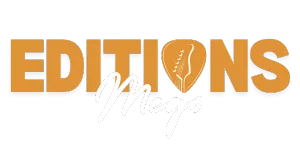One quickly realizes the importance of chords while playing guitar. Chords serve as the foundation of many songs, forming the harmonic backbone upon which melodies and rhythms are built.
For those just starting out, understanding the essential ones can significantly expedite the learning process, allowing novices to play and enjoy a multitude of songs with ease.
Now, we’ll go into the crucial details every beginner should familiarize themselves with.
Table of Contents
ToggleWhat to Start With?
Open chords are the first stepping stone for most. They utilize the guitar’s open strings, producing a full, resonant sound. They’re the backbone of countless songs, making them indispensable for those just starting out. Major ones bring a cheerful and bright sound to the music.
As a beginner, mastering these can open the door to playing many popular songs. Here are a few essential ones you should know:
- A Major
- D Major
- E Major
- G Major
Minor chords, on the other hand, have a more somber and introspective tone. They’re just as vital as their major counterparts, offering depth to musical compositions. Key minor ones to start with include:
- Am (A minor)
- Dm (D minor)
- Em (E minor)
What’s the Next Step?
Once you’re comfortable with open chords, the next step is often barre chords. Mastering these can seem challenging, but resources like free packs from Unison Audio offer varied sound textures that can make practice more engaging and insightful.
These require a finger to press down multiple strings across the fretboard, allowing you to shift the same shape up and down the neck, thereby unlocking a plethora of new harmonies.
The beauty of barre chords is their versatility. By learning just a few shapes, you can play any major ones anywhere on the fretboard. Beginners should initially focus on:
- E Major Shape (rooted on the 6th string)
- A Major Shape (rooted on the 5th string)
Like their open counterparts, minor barre chords add emotional depth to your playing. Two fundamental shapes to kickstart your journey are:
- E Minor Shape (rooted on the 6th string)
- A Minor Shape (rooted on the 5th string)
Progressions
Chords on their own are like words in a language. When you combine them, they form sentences, or in musical terms, progressions. Recognizing common chord progressions can significantly expedite your learning process, letting you play numerous songs.
Among the most iconic progressions, the I-IV-V forms the backbone of blues, rock, and even some pop songs. As a beginner, it’s crucial to recognize this sequence as it frequently appears in music.
In the key of G, for instance:
- G (I)
- C (IV)
- D (V)
Often found in jazz and more sophisticated pop tunes, the ii-V-I is another indispensable progression. When starting out, be attentive to this sequence as it can refine your harmonic understanding.
In the key of C major, this would be:
- Dm (ii)
- G (V)
- C (I)
By mastering these chords and progressions, beginners will be well-equipped to tackle a vast repertoire of songs, facilitating a smoother and more enjoyable learning experience.
What are Power Chords?
Beyond the realm of open and barre lies the realm of power chords. These two or three-finger chords capture the spirit of rock, punk, and metal. Simple yet impactful, they offer beginners an easy way to rock out with minimal finger stretching.
Fifth chords consist of the root note and its fifth. Unlike major or minor ones, they don’t have a third, giving them a neutral sound. This is what makes them so versatile in various genres. Beginners should start with these shapes:
- Rooted on the 6th string (E string): For instance, a G5 would be played using the 3rd fret on the 6th string and the 5th fret on the 5th string.
- Rooted on the 5th string (A string): An example is the C5, played using the 3rd fret on the 5th string and the 5th fret on the 4th string.
Given their simplicity, power chords can be moved around the fretboard easily, making them perfect for those just starting to experiment with songwriting. Common uses include:
- Creating driving rhythms in rock and punk songs.
- Layering with distortion or overdrive effects for a fuller sound.
Transitions
While knowing individual chords is essential, transitioning between them smoothly is equally important. It’s the fluidity in these transitions that ensures your music doesn’t sound disjointed. As beginners practice, certain challenges in transitions may arise:
- Fingers not moving in unison leading to a delayed chord change.
- Producing a buzzing sound due to not pressing down hard enough.
- Missing beats during the transition.
Addressing these early on can lead to a more polished sound. To ensure that your chord changes are seamless and timely:
- Practice transitioning between two back and forth slowly, then gradually increase speed.
- Ensure your fingers are close to the frets for optimal sound.
- Use a metronome to help maintain rhythm during changes.
Finger Placement and Hand Posture
Sure, learning these is crucial, the placement of your fingers and the posture of your hand are equally pivotal. Proper technique ensures not only clear and resonant sound but also prevents potential injuries and discomfort as you play.
Proper finger placement is essential for producing clean notes and chords. Beginners often encounter muted strings or buzzing sounds, and addressing these issues early can make a significant difference in your playing. Here are some recommendations on how to conduct it properly:
| Finger Placement |
|---|
| Ensure your fingers are curled and come down on the strings perpendicularly |
| Position your fingers close to the frets, but not on top of them |
| Apply consistent pressure to avoid any muted or buzzing sounds |
A relaxed and natural hand posture can prevent unnecessary strain and ensure fluid movement across the fretboard. For those just starting:
- Keep the thumb positioned at the back of the neck, allowing the fingers to arch over the strings.
- Avoid clenching the neck tightly; maintain a relaxed grip.
- Ensure your wrist is fairly straight, minimizing any sharp bends.
Developing Practice Routines
As with any skill, consistency in practice is vital for growth. Developing a structured routine helps in reinforcing what you’ve learned and introduces new challenges at a manageable pace. A structured practice session starts with clear goals. Whether you’re aiming to master a particular chord transition or perfect a new song, having a direction helps maintain focus.
| Practice Session Segments |
|---|
| Setting a specific time for practice |
| Warm-up |
| Technique exercises |
| Song practice |
| Experimentation |
Recognizing and celebrating small achievements can be immensely motivating. To ensure that you remain encouraged:
- Maintain a practice log detailing what you’ve learned and areas of improvement.
- Record your playing periodically to monitor progress over time.
- Celebrate milestones, whether it’s mastering a challenging chord or playing a song from start to finish.
Musical Theory
A basic grasp of music theory can be invaluable. It doesn’t just help in understanding the intricacies of songs but also aids in improvisation, songwriting, and deepening your connection with the instrument. At the heart of melodies, solos, and improvisation lie scales.
They’re sequences of notes that provide a framework for creating music. For beginners:
- Start with the Major scale, commonly known as the ‘do-re-mi‘ scale.
- When you feel comfortable enough, practice scales in different positions to familiarize yourself with the fretboard.
- Explore minor scales, which offer a different emotional quality to your playing.
Beyond just playing these, understanding how they’re built can be enlightening. By learning the theory behind chord construction:
- Recognize that these are typically formed by stacking the 1st, 3rd, and 5th notes of a scale.
- Discover extended ones like 7ths and 9ths, adding richness to your playing.
- Develop the ability to form and identify them across the fretboard.
The Importance of Ear Training
While reading music and understanding theory is beneficial, developing your aural skills can transform your relationship with music. Being able to distinguish notes, chords, and progressions by ear can greatly enhance your musical experience.
Intervals are the distances between two notes, and they form the foundation of melodies and chords. To train your ear:
- Start by distinguishing between major and minor thirds, the building blocks of major and minor.
- Progress to identifying other intervals like fifths, sevenths, and octaves.
- Use apps or software specifically designed for ear training to test and improve your skills.
One of the most rewarding exercises in ear training is transcribing music. By attempting to write down or play a song’s melody or chord progression after listening to it:
- Sharpen your listening skills, distinguishing between various musical elements.
- Develop a deeper appreciation for song structures and compositions.
- Enhance your ability to learn songs faster in the future.
FAQs
Are online tutorials effective for learning chords?
Online tutorials can be beneficial, especially for visual learners. However, ensure the sources are reputable, and consider combining them with traditional lessons or guidance for a holistic learning experience.
Can I play songs using just a few chords?
Absolutely! Many popular songs use just three or four chords. As you master the basic ones, you’ll be able to play along with numerous songs.
How long does it take to master the beginner chords?
The timeframe varies for each individual. With consistent practice, some people might become comfortable with the basic ones in a few weeks, while others might take a couple of months.
Do I need a specific type of guitar to start learning chords?
No, the basic ones can be learned on both acoustic and electric guitars. The type of guitar might influence the sound and ease of play but won’t hinder learning the fundamental chords.
Why do my fingers hurt when playing chords?
Finger discomfort is common for beginners due to the pressure required to press down on the strings. This discomfort typically subsides as one’s fingers develop strength and calluses.
The Bottom Line
The basic chords pave the way for beginners to explore, enjoy, and express themselves musically. As you progress, you’ll discover that many songs, across genres and eras, are built upon these.
With consistent practice and dedication, these chords will become second nature, enabling you to shift your focus to more advanced techniques and richer musical expressions. Remember, every expert was once a beginner.
Stay patient, practice diligently, and let the music guide your journey. Our site can provide you with numerous useful insights in similar subjects.
















